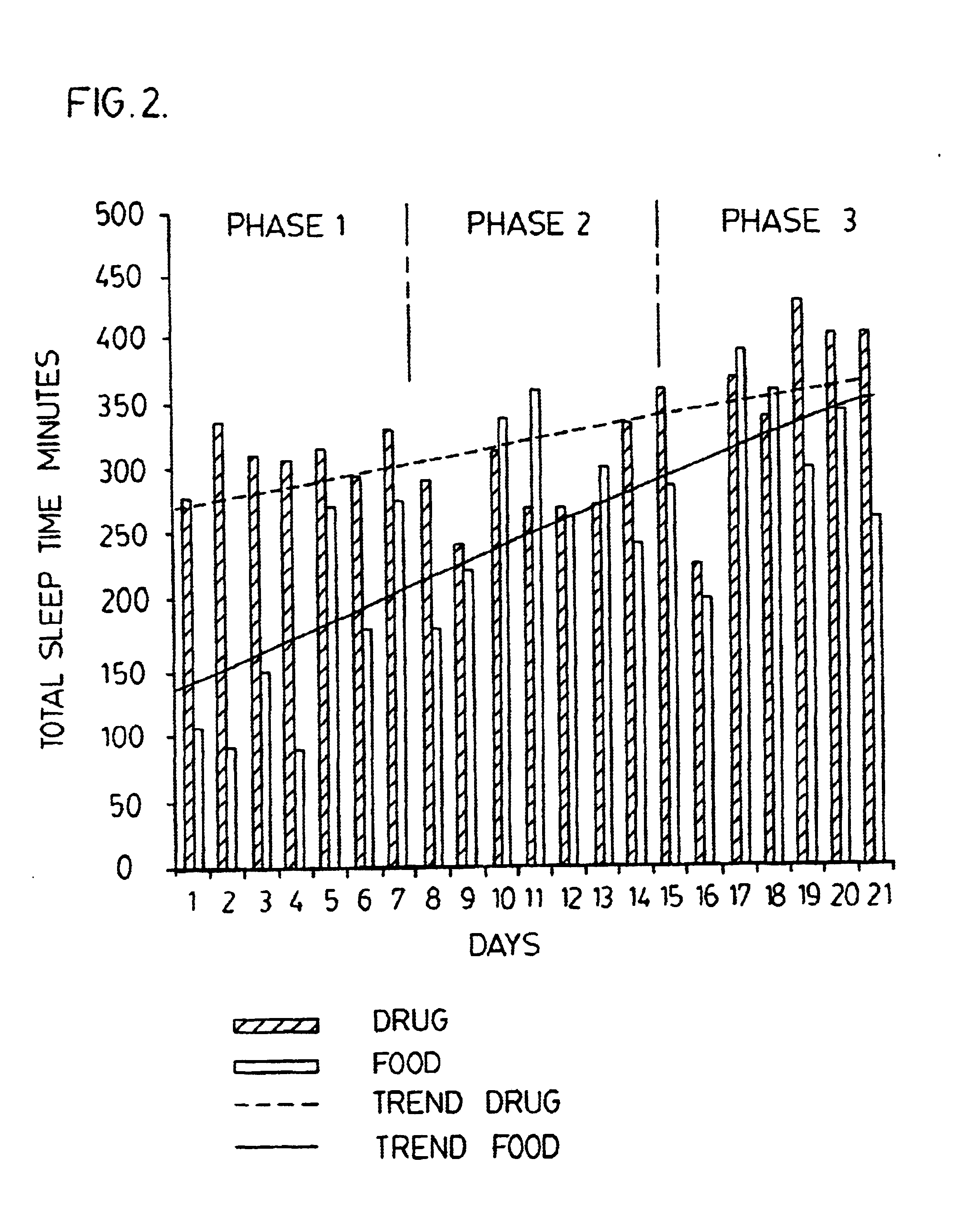Tryptophan source from plants and uses therefor
a technology of tryptophan and plant components, which is applied in the direction of plant ingredients, biocide, plant growth regulators, etc., to achieve the effects of improving sleep, shortening sleep latency, and increasing total sleep tim
- Summary
- Abstract
- Description
- Claims
- Application Information
AI Technical Summary
Benefits of technology
Problems solved by technology
Method used
Image
Examples
example 1
Procedure for Defatting Seeds Using a Modified Oil Press
Flaking
Initial flaking of the squash seeds is done to rupture oil cells and to prepare a thin flake with a large surface area for pre-pressing by passing seeds through a set of smooth rollers using a lab scale flaking mill.
Conditioning
Conditioning is done to further rupture oil cells, increase pliability of the flakes and increase the efficiency of the expeller by lowering the viscosity of the oil contained. The conditioning of the flaked seeds was undertaken in a microwave for from about 1 minute to about 2 minutes to achieve a temperature between 40-45° C.
Pressing
The heated seeds are then pressed using a mechanical press (Gusta Laboratory Press set to 4.5 amps) to remove approximately ⅔ oil with 22% by weight residual oil content in the press cake.
example 2
Tryptophan Analysis of the Defatted Seed Meal
A. High Pressure Liquid Chromatography (HPLC)
With pure protein or peptides, amino acid determination is relatively easily made with High Pressure Liquid Chromatography (HPLC). HPLC requires the hydrolysis of protein into the constituent amino acids that are then run in a column under pressure. The column causes the various amino acids to run at different speeds dependent on the size and charge. The determination of a tryptophan within a food source is, however, more complicated because of its ability, especially in the peptide form, in the presence of light, heat, hydrogen and hydroxyl ions (Concon, 1975). This difficulty may explain, in part, the problems in quantifying tryptophan within food in a reliable fashion utilizing HPLC with possible tryptophan losses of 10-30% (Landry and Delhaye, 1996). Relying on the presence of an aromatic ring within the tryptophan molecule, a spectrophotometric method was utilized at the Guelph Food Techno...
example 3
Comparative Analysis of Defatted Pumpkin,
Butternut and Peppercorn Squash Seeds
Pumpkin seeds, butternut squash seeds and peppercorn squash seeds were flaked, conditioned and pressed according to the procedure set forth in Example 1. Using second derivative spectroscopy, the tryptophan content of the seed meal was determined and the results set forth in the Table below. Screening of butternut squash, peppercorn squash and pumpkin seeds revealed that all have high tryptophan contents but that butternut squash seeds are highest in tryptophan. It also revealed that 100 gm of defatted butternut squash seed meat contains in excess of 1000 mg of tryptophan. For butternut squash, the ratio of seeds to the final seed meal is approximately one third.
TABLETryp / defattedCrudemeal (protein,ProteinTryp / Totalstarch, fiber)Oil(g / kg)SourceProtein (mg / g)(mg / g)(g / kg)(intact seed)Pumpkin seed17.97.35333208defatted mealButternut23.810.1403221squash seeddefatted mealPepper squash17.98.14446202seed meal
HPLC...
PUM
| Property | Measurement | Unit |
|---|---|---|
| temperature | aaaaa | aaaaa |
| temperature | aaaaa | aaaaa |
| wavelength | aaaaa | aaaaa |
Abstract
Description
Claims
Application Information
 Login to View More
Login to View More - R&D
- Intellectual Property
- Life Sciences
- Materials
- Tech Scout
- Unparalleled Data Quality
- Higher Quality Content
- 60% Fewer Hallucinations
Browse by: Latest US Patents, China's latest patents, Technical Efficacy Thesaurus, Application Domain, Technology Topic, Popular Technical Reports.
© 2025 PatSnap. All rights reserved.Legal|Privacy policy|Modern Slavery Act Transparency Statement|Sitemap|About US| Contact US: help@patsnap.com


